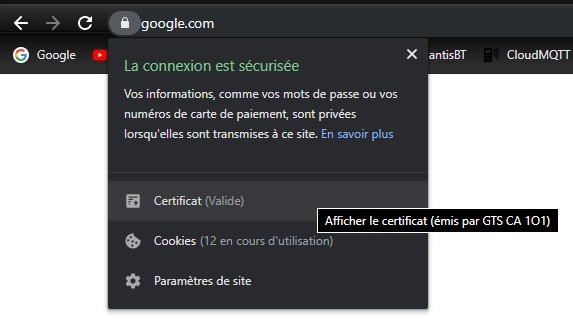Other Parts Discussed in Thread: UNIFLASH
Hi all,
I tried the SSL demo, but I am always getting the (-456) error : Bad CA File.
Actually, I am not sure that I have flashed the right certificate or maybe it was an invalid format of certificate.
I am using SDK_1.2.0 and ServicePack_1.0.1.6-2.7.0.0.
Here is the code for setting up the socket and some instruction from SSL() demo:
#define APPLICATION_NAME "SSL"
#define APPLICATION_VERSION "1.1.1"
#define SERVER_NAME "www.google.com"
#define GOOGLE_DST_PORT 443
#define SL_SSL_CA_CERT_FILE_NAME "/cert/testcacert.der"
#define DATE 13 /* Current Date */
#define MONTH 11 /* Month 1-12 */
#define YEAR 2019 /* Current year */
#define HOUR 10 /* Time - hours */
#define MINUTE 26 /* Time - minutes */
#define SECOND 0 /* Time - seconds */
Static long ssl()
{
SlSockAddrIn_t Addr;
int iAddrSize;
long lRetVal = -1;
int iSockID;
unsigned char ucMethod = SL_SO_SEC_METHOD_SSLV3;
unsigned int uiIP,uiCipher = SL_SEC_MASK_SSL_RSA_WITH_RC4_128_SHA;
lRetVal = InitializeAppVariables();
ASSERT_ON_ERROR(lRetVal);
.....................
.....................
.....................
.....................
//
// opens a secure socket
//
iSockID = sl_Socket(SL_AF_INET,SL_SOCK_STREAM, SL_SEC_SOCKET);
if( iSockID < 0 )
{
UART_PRINT("Device unable to create secure socket \n\r");
return lRetVal;
}
//
// configure the socket as SSLV3.0
//
lRetVal = sl_SetSockOpt(iSockID, SL_SOL_SOCKET, SL_SO_SECMETHOD, &ucMethod,\
sizeof(ucMethod));
if(lRetVal < 0)
{
UART_PRINT("Device couldn't set socket options \n\r");
return lRetVal;
}
//
//configure the socket as RSA with RC4 128 SHA
//
lRetVal = sl_SetSockOpt(iSockID, SL_SOL_SOCKET, SL_SO_SECURE_MASK, &uiCipher,\
sizeof(uiCipher));
if(lRetVal < 0)
{
UART_PRINT("Device couldn't set socket options \n\r");
return lRetVal;
}
//
//configure the socket with GOOGLE CA certificate - for server verification
//
lRetVal = sl_SetSockOpt(iSockID, SL_SOL_SOCKET, \
SL_SO_SECURE_FILES_CA_FILE_NAME, \
SL_SSL_CA_CERT_FILE_NAME, \
strlen(SL_SSL_CA_CERT_FILE_NAME));
if(lRetVal < 0)
{
UART_PRINT("Device couldn't set socket options \n\r");
return lRetVal;
}
lRetVal = sl_SetSockOpt(iSockID, SL_SOL_SOCKET, \
SO_SECURE_DOMAIN_NAME_VERIFICATION, \
g_Host, strlen((const char *)g_Host));
if( lRetVal < 0 )
{
UART_PRINT("Device couldn't set socket options \n\r");
return lRetVal;
}
/* connect to the peer device - Google server */
lRetVal = sl_Connect(iSockID, ( SlSockAddr_t *)&Addr, iAddrSize);
if(lRetVal < 0)
{
UART_PRINT("Device couldn't connect to Google server \n\r");
return lRetVal;
}
return SUCCESS;
}
I downloaded the CA certificate like this way (from windows 10 machine):
Then, I loaded the file using UniFlash:
Thanks.


